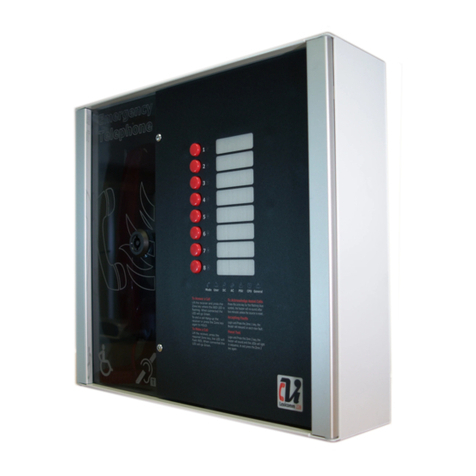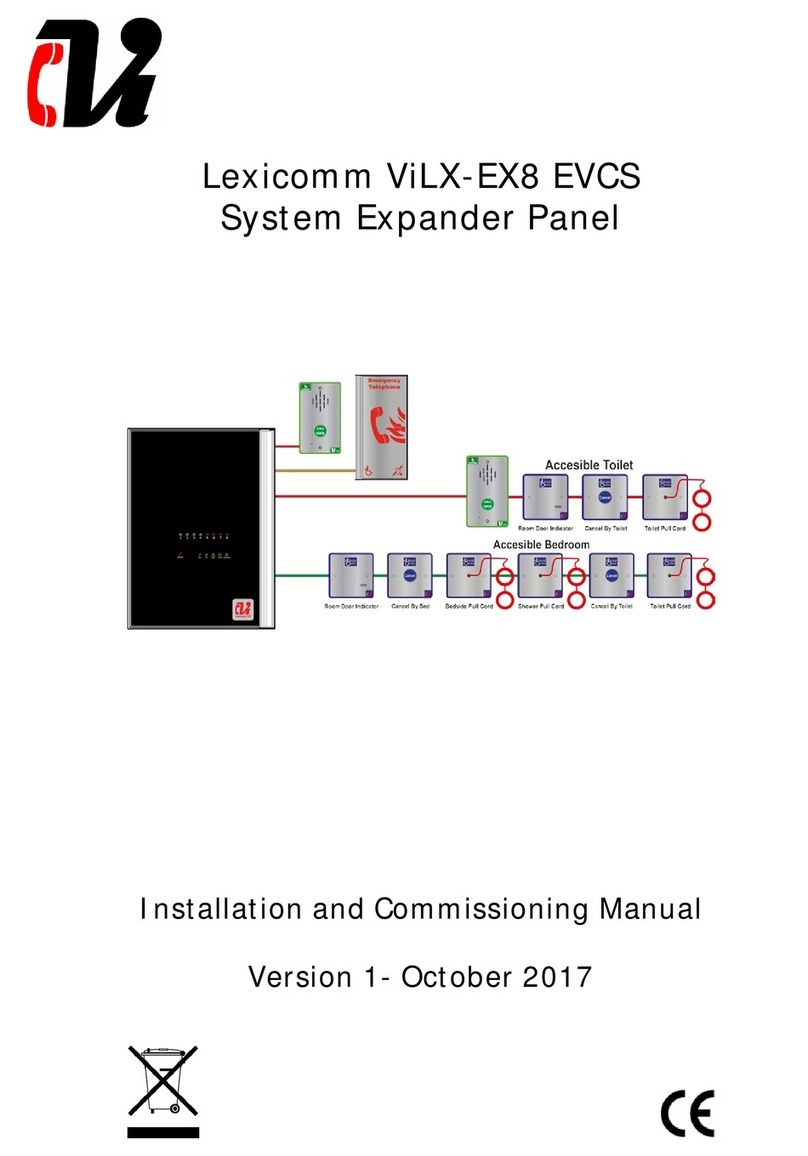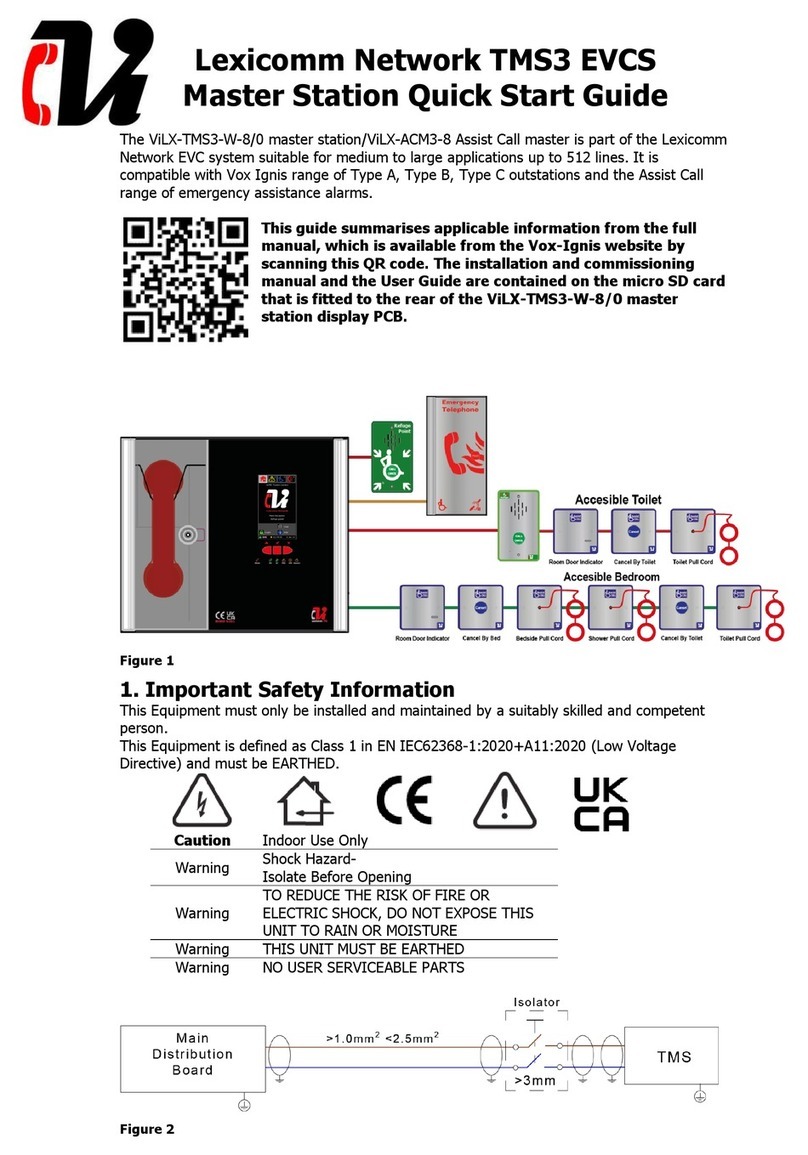Lexicomm Network LX228N
Master Station Quick Start Guide
Page 1 of 8
The LX228N master station is a ready out of the box EVC system suitable for standalone and
small 2 panel network applications up to 8 lines. It is very simple to install, requiring no set
up or software, and is compatible with Vox Ignis range of Type A, Type B, Type C outstations
and the Assist Call range of emergency assistance alarms.
This guide summarises applicable information from the full
manual, which is available by scanning this QR code.
Figure 1
1. Mounting Information
Master stations should be mounted in fire control rooms or next to the fire alarm panel at a
mounting height of between 1.4 and 1.5m above finished floor level to the centre of the
controls. Type A outstations (fire telephone) are generally fitted in fire-fighting lobbies and
fire and rescues access points at 1.3 to 1.4m above (FFL). Type B outstations are used in
disabled refuges at a mounting height of 0.9m to 1.2m (FFL). For Emergency assistance
alarms see ViLX-ACA datasheet.
2. Cable Information
Fire telephone systems utilise Type A outstations and must use enhanced grade fire resistant
cabling throughout for all wiring, including the mains supply to the master station. Max
distance using 1mm or 1.5mm cable is 500m from outstation to master station.
Disabled Refuge systems utilise Type B outstations, they are wired in standard or enhanced
grade fire resistant cabling Refer to BS 5839-9:2021 for full details.
Max distance using 1mm or 1.5mm cable is 500m from outstation to master station.
Network/Repeater systems are wired in standard or enhanced grade fire resistant cabling, 2 x
2 core loops 1mm or 1.5mm (2c Data,2c Audio) Refer to BS 5839-9:2021 for full details.
Emergency assistance alarms (Assist Call) for dedicated circuits use 1mm 2 core flex for
lengths of 500m from the master or security cable for shorter lengths from up to 50m for 2
cores up to 200m if 4 cores are twisted together. If sharing with a Type B use the same
grade of fire-resistant cable.
3. Important Safety Information
This Equipment must only be installed and maintained by a suitably skilled and competent
person.





























